Skip to content
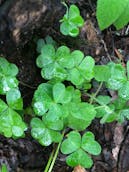
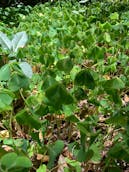
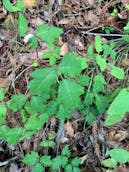
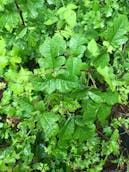
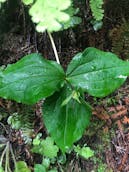
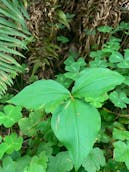
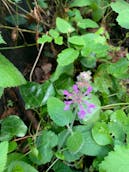
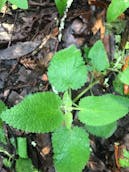
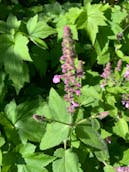

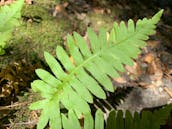
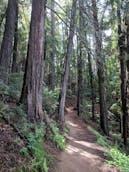
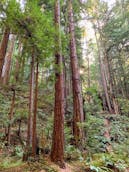
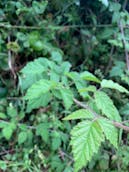
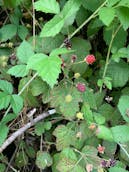
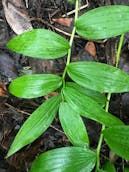
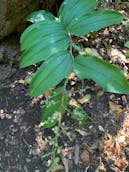
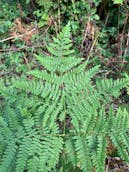
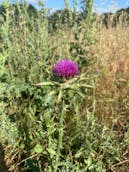
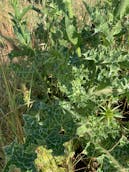
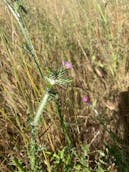
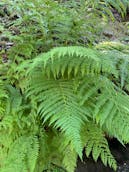


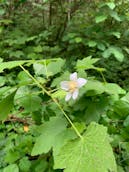
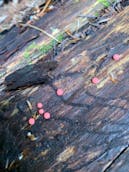
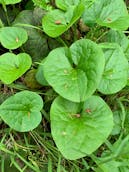
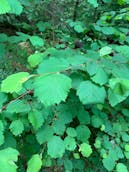
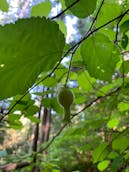
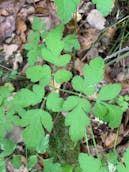

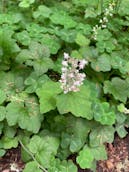


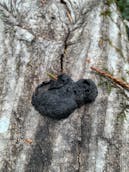





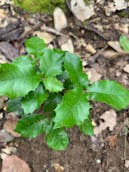


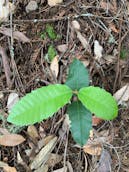
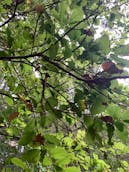
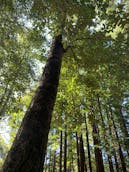
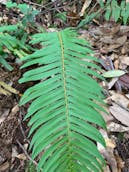
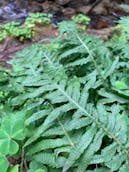

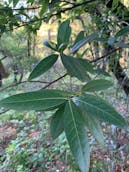

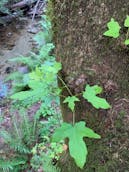

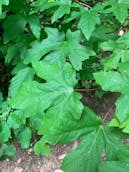
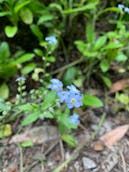

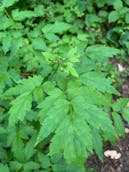
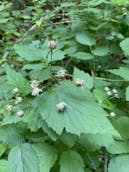
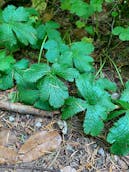
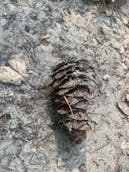
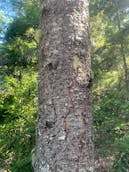
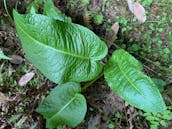
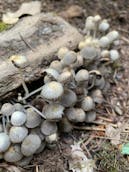


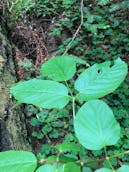
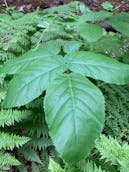
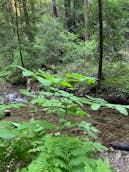
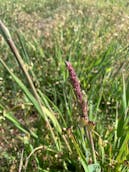

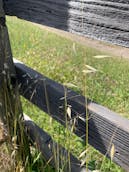
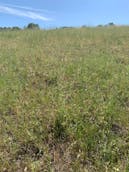

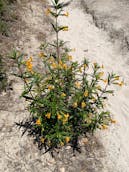


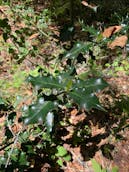
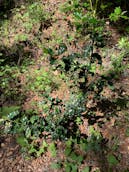
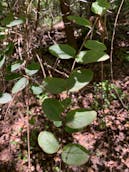
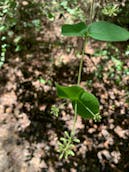

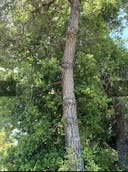
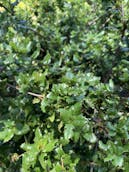

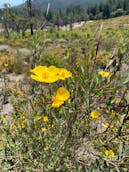
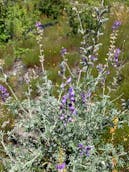

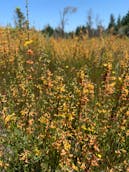
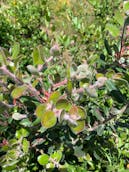
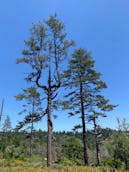
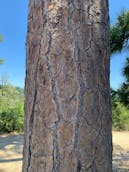
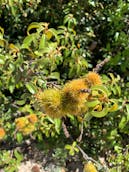


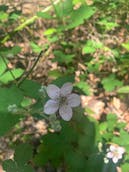

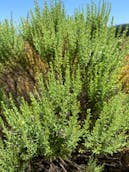
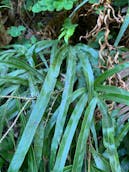

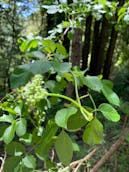
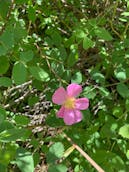
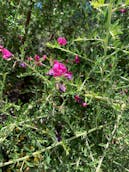

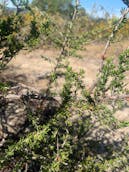

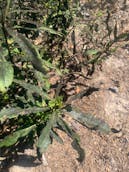
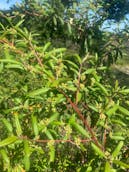


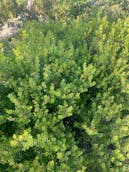
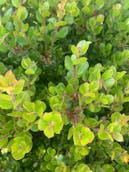
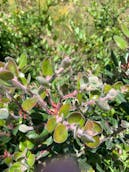
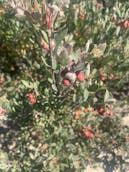
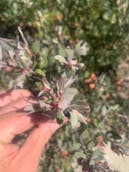


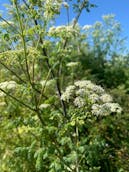

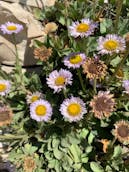
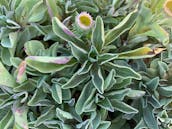
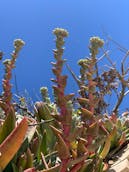
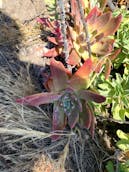
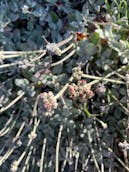

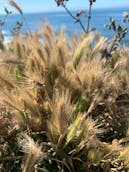
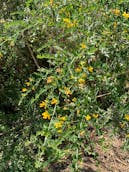
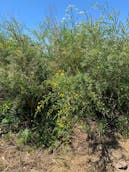
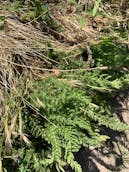
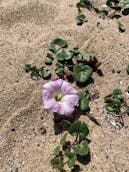

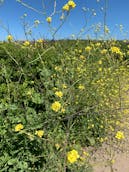



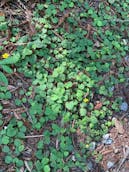
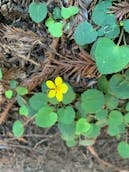
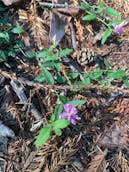
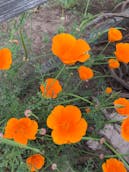
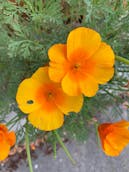
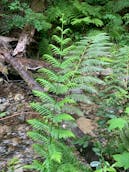
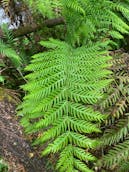

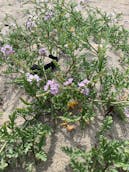
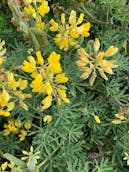

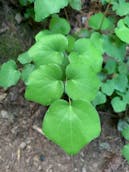
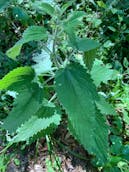
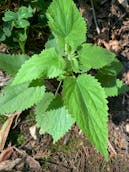
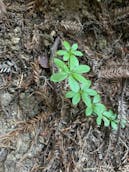

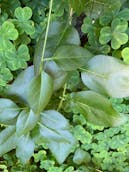

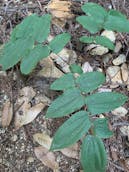
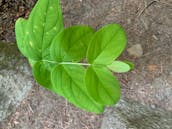
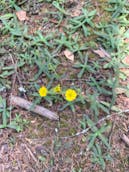
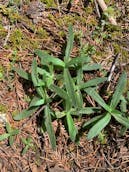
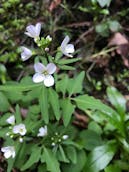
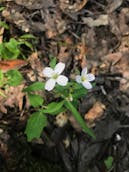
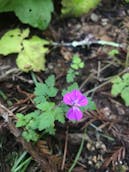


 Plant Information
Plant Information
Back to Plant List
Plants
Name
Latin Name
Plant Photo
Characteristics
Notes
Ecosystem
Distincitves
Type
Name
Latin Name
Plant Photo
Characteristics
Notes
Ecosystem
Distincitves
Type
Redwood Sorrel


Perennial
Native
Edible
Shade-loving, perennial groundcover with edible, clover-shaped leaves and white to pink flowers - native to the West Coast. The leaves, stems, and flowers of this native food are all edible raw or cooked and have a tangy lemony flavor. Often confused with clovers. Flowers in the spring and summer. Leaves need shade so bad they naturally turn downwards when in sunlight.
Coastal Redwood
Three heart shaped leaves, connected at the center. Carpets heavily shaded redwood areas
Perennial, Native, Edible
Poison Oak


Native
Dangerous
The worst plant in the universe. A woody vine or shrub that thrives in shady and dappled light through full and direct sunlight conditions. Contains a poisonous oil called urushiol that cause painful and blistering rashes after contact.
Coastal Redwood
Leaves of three, rounded like a cloud around edges.
Native, Dangerous
Pacific Trillium


Perennial
Rare find in moist dark forested areas. White, pink, or purple 3-petaled flowers sit on a long stem, atop 3 pointed oval leaves. Not to be confused with the giant trillium, which has upright petals.
Coastal Redwood
Three large smooth leaves with small flower growing out of middle.
Perennial
Lemon Balm



Edible
Invasive
Perennial
Great for making tea, can support depression, anxiety, insomnia and more! It can also act as a natural mosquito repellent by clapping your hands with leaves and rubbing onto skin.
Coastal Redwood
Leaves very fuzzy to the touch, always growing opposite eachother. Small purple flowers when in bloom.
Edible, Invasive, Perennial
Deer Fern


Native
Perennial
Found in damp, shaded forest areas such as Redwood Forest and Mixed Evergreen Forest. Commonly mistaken with the western sword fern. Less common than sword
Coastal Redwood
Large single columns growing with leaves directly connected to stem.
Native, Perennial
Coastal Redwood


Native
Coastal Redwood
Tall, red-colored bark
Native
California BlackBerry


Fruit-Bearing
Edible
Native
A wide, spreading shrub or vine-bearing bush with prickly branches, white flowers and edible fruits. The sweet-tart fruits are dark purple to black and up to 2 centimeters in length. They can be eaten raw, baked in pie or cobbler, or frozen
Coastal Redwood
Small dark thorns on the vines stem and red or black berries in spring and summer. Coarse toothed ridges on edges of leaves.
Fruit-Bearing, Edible, Native
False Solomon’s seal


Perennial
Herb
Little white buds in the spring followed by starry flowers, green and black striped berries, and finally deep red berries in the fall. Requires shade or part shade and moist soil - often found in woody areas. It’s fleshy roots have been used to flavor foods (similar to onion) - common in all USA states except Hawaii
Coastal Redwood
Smooth deeper green alternate pinnate leaves. Often 2-3 large veins running down length of leaf.
Perennial, Herb
Bracken Fern

Perennial
Invasive
Western bracken fern (Pteridium aquilinum, meaning “eagle-like”) thrives in many ecosystems around the globe and is a resident of the coast redwood forest. A perennial plant, it survives over winter as a dormant root system. Bracken fern reproduces clonally through soil by expanding lateral rhizomes. Then, in the early spring, new fern fronds poke up into the sunlight as unfurling fiddleheads. Bracken ferns are a polarizing topic as some claim they are a delicacy and others that you should never consume them due to a Carcinogen called Ptalquilaside. You can identify bracken as unique from lady fern because it is widest at the base and tapers towards the end (whereas lady fern is widest In the middle)
Coastal Redwood
Widest at base, 2-3x pinnate leaves.
Perennial, Invasive
Blessed Milk Thistle


Invasive
Annual
Weed
Milk thistle (Silybum marianum) is a thorny plant presenting decorative leaves with a white pattern of veins and purple flower heads. The plant originates from mountains of the Mediterranean region, where it forms scrub on a rocky base. It is considered an invasive weed and can now be found throughout the world.
Riparian
Looks spiky, purple flowers and shiny pale green leaves with white veins. larger purple flower than italian thislte
Invasive, Annual, Weed
Italian Thistle

Invasive
Weed
Annual
Italian thistle is a winter annual broadleaf weed that is similar in appearance to slenderflower thistle, and the blessed milkthistle. The plant grows up to six feet tall with spiny-winged stems - found in riparian areas like Pogonip.
Riparian
Spiky long stems, small spiky looking purple flowers in the spring and summer
Invasive, Weed, Annual
Lady Fern

Perennial
You can identify Lady Fern as it is widest in the middle and tapers towards base (whereas bracken is widest at base)
Coastal Redwood
Widest at middle, 2-3x pinnate
Perennial
Thimbleberry



Perennial
Fruit-Bearing
Edible
Dense shrub with large palm sized leaves. Thimbleberry produces an edible fruit in mid to late summer that ripen to a bright red.
Coastal Redwood
5-pedaled white flowers, large leaves, slightly fuzzy stems
Perennial, Fruit-Bearing, Edible
Wolf’s milk slime

Grows in groups on dead wood, especially large logs. Thought it may seem like one, this species isn't actually a mushroom or fungus. It belongs to a group called slime molds, or myxomycetes—a group of funguslike organisms that at one time were regarded as animals, then thought to be plants, then fungi. Now, because of DNA studies, slime molds are believed to be closer to the protozoa.
Coastal Redwood
Bright pink, goo like balls on fallen logs. Can turn an Olive brown with maturity
British Columbia Wild Ginger

Dangerous
Often found in colonies or clusters near the ground, this plant spreads via rhizomes. Can be toxic if eaten, recommended to wear gloves if handling. In spring, it develops distinct hirsute (hairy) cup-shaped, brown-purple to green-yellow flowers which terminate in three long gracefully curved lobes, often concealed by leaves. May emit ginger aroma when rubbed
Coastal Redwood
Palm sized heart shaped leaves growing close to ground
Dangerous
Beaked Hazelnut


Edible
Gets its is named from its fruit, which is a nut enclosed in a husk with a tubular extension 2 - 4 centimeter long that resembles a beak. The spherical nuts, which are surrounded by a hard shell, are edible. Whereas the majority of plants have flowers with both the male and female pieces necessary for reproduction, the hazelnut shrub has separate male and female flowers present on the same shrub.
Coastal Redwood
Round leaves with coarse toothed edges, 3-5 foot tall shrub
Edible
Mountain sweet cicely
Osmorhiza berteroi

Perennial
Native
Part of the carrot family, the Mountain Sweet Cicely is a flowering plant that is native to much of western and North America (as well as Argentina and Chile). Aromatic herb with small white flower cluster when blooming. Used by Native Americans for herbal medicine and food - The root was eaten, and also used as a medicinal treatment for coughs and colds
Coastal Redwood
Trifoliate (three leaflets) toothed or lobed leaves. Small white flower cluster when in bloom
Perennial, Native
Three leaf Foamflower
Tiarella Trifoliata


Perennial
Native
Native to the low to moderate elevenation moist forests. Tiarella "flowers" are actually inflorescences; a collection of many small bell-shaped or spidery florets on a single floral structure.
Coastal Redwood
Small white bell shaped flowers on towering stem, grows low to ground (often near water)
Perennial, Native
Hypnum Moss


Native
Often found on fallen redwoods and logs, it is a common and widespread species of moss belonging to the genus Hypnum. It is found in all continents except Antarctica and occurs in a wide variety of habitats and climatic zones
Coastal Redwood
Mixed Evergreen Forest
Protruding about 1/2 inch from fallen log, looks feathery and soft
Native
Coal Fungus / Cramp Balls

As with other fungi the light spores are distributed globally and the fungi develop wherever conditions are suitable - it lives on dead and decaying wood, and is a common, widespread saprotroph (which means it “eats” by processing decaying organic matter.
All black fungus found usually on fallen trees.
Pacific Madrone



Native
Annual
Fruit-Bearing
Edible
The plants have a widely spreading root system and they quickly reestablish after disturbance by re-sprouting from the stump. Grow slow and live long. Pacific madrone trees provide edible berries and habitat for many bird species including robins, cedar waxwings and bandtailed pigeons. The Salinan, Miwok, Pomo, and other California tribes have long used the berries of Pacific madrone for food and to make cider.
Smooth red, often peeling bark.
Native, Annual, Fruit-Bearing, Edible
Arctic Butterbur

Native
Perennial
One large single leaf growing out of a single stem. Near water sources. Wooly fuzz on underside of leaf
Native, Perennial
Western Maidenhair Fern

Perennial
Native
Beautiful black stems, fan-like pinnate leaves.
Perennial, Native
Coast Live Oak



Native
Coast live oaks stabilize soil on slopes, provide an organic-rich litter, and contribute to a habitat for a diversity of insects, birds, and mammals. They also produce edible acorns which are an important food source for local wildlife. Coast live oak is particularly well adapted to fire. Branches may produce new shoots after having been lightly burned. Trunks exposed to moderate fires often resprout from the base. Like most oaks, it has an obligate relationship with mycorrhizal fungi, which provide critical moisture and nutrients
Mixed Evergreen Forest
Coastal Redwood
Smaller, sharp poky ridged leaves in comparison to the tan oak.
Native
Tan Oak



Native
The tan oak produces edible acorns which were a staple food supply for Native American peoples. Tanoak wood is of high quality, being of good strength and hardness with a fine grain, however the wood is not widely used because of limited supply. A single tanoak tree can produce over 200 pounds of acorns in a good year and produces at least a partial crop every year
Coastal Redwood
Mixed Evergreen Forest
Larger leaves than coastal live oak (but still poky sides)
Native
Sword Fern

Coastal Redwood
Very similar to deer fern but leaves are connected to the stem via a very small stem - much more common in Henry cowbell in comparison to deer fern as well.
Licorice Fern


Native
Perennial
Coastal Redwood
Very similar to other polypody ferns but grows from a single stem. May grow in patches, but all individuals. Leaves connected to stem like deer fern but deer fern looks more similar to the sword.
Native, Perennial
California Bay Laurel


Native
Endemic
Fruit-Bearing
Endemic (found only in this part of the world) native hardwood evergreen tree. Trunk often divides at its base when growing in poor soil, creates an olives like fruit that is yellowish when ripe and has one large seed
small round and green berry lightly spotted with purple and turning orange on maturity
Native, Endemic, Fruit-Bearing
Big Leaf Maple



Native
The biggest leaves of any maple tree, this tree is found in riparian areas and the redwoods
Riparian
Coastal Redwood
Large maple leaves - paired wing helicopter twirly seeds.
Native
Broadleaf forget-me-not


Coastal Redwood
Small purple flowers, long leaf with darker somewhat pronounced vein down middle.
Red Baneberry

Fruit-Bearing
Dangerous
Red berries that blossom in spring or summer can be highly toxic, do not eat!
Coastal Redwood
Bright red berries in the spring and summer, leaves are large and (maybe) pinnate with ridged edges. Small veins. Tall white stem of flowers before berries.
Fruit-Bearing, Dangerous
Black Raspberry

Edible
Native
Fruit-Bearing
Very similar to the California blackberry, this plant creates a delicious edible fruit
Coastal Redwood
Edible, Native, Fruit-Bearing
Pacific Sanicle

Native
Perennial
Also known by the name pacific black snakeroot
Heavily veined the leaflet leaves
Native, Perennial
Douglas Fir


When Douglas firs grow in dense forests, they self-prune their lower branches so the conical crown starts many stories above the ground. Trees growing in open habitats, especially younger trees, have branches much closer to the ground. After the sequoias, Douglasfir with it straight regular trunk is our largest tree and some can grow over 300 feet
There are two varieties of this species, coast Douglas fir and Rocky Mountain Douglas fir. Coast Douglas firs are the faster-growing and larger of the two varieties
Coastal Redwood
Mixed Evergreen Forest
2 to 4 inch cones, narrow three pointed bracts between scales on cone.
Broad leaved Dock

Invasive
Native to Europe, this weed of considered introduced though not necessarily invasive.
Large oval shaped being single leaves pointed at the end. Low to the ground growth.
Invasive
Trooping Crumble Cap

Edible but of low quality, this mushroom does not dissolve into black ink as do many other coprinoid mushrooms.
Coastal Redwood
Growing in small patches, small domed head with a great color.
Honey comb coral slime mold


Slime mold found on decaying wood. Slime mold plasmodia creep about over the surfaces of materials, engulfing bacteria, spores of fungi
and plants, protozoa, and particles of nonliving organic matter. slime molds form structures called
plasmodia which are naked (i.e., without cell walls) masses of protoplasm which can move and engulf particles of food in an amoeboid manner
Coastal Redwood
whitish and translucent with a fuzzy appearance
California Spikenard



Only Native plant in the ginseng family to California. Their thick tap roots extend straight down for many feet into ground water in order to stay moist during the region’s extremely dry summers and to stay put against raging flood waters. Some use their leaves to create a tea that aides those with chronic stress.
Large smooth looking oval leaves in tall shoots and groups growing near water.
Velvet Grass

Grass
Perennial
Invasive
Also known as the yorkshire fog this is an invasive species in North America.
Topped with a large purple stem like flower with multiple purple folds.
Grass, Perennial, Invasive
Big Quaking Grass

Annual
Grass
Invasive
Used often in bouquets, this invasive grass is deer resistant!
White little (flowers?) growth that look like a rattle on rattle snake, purple and darker on the top.
Annual, Grass, Invasive
Pineapple Weed
Invasive
Annual
Its yellow pineapple like flowers are actually corollas and they smell sweet when crushed. Needs full sun.
Small little clusters of yellow like flower things that look like mini pineapples.
Invasive, Annual
Slender Oat


Grass
Annual
Can grow up to 2-2.5 feed with bristly spiklets.
Grass, Annual
Orange-bush Monkey Flower


Native
Annual
Also known as the sticky monkey flower this plant has sticky green leaves to the touch. The flowers can actually occur in a vareity of shades from white to red though the most common is of course orange. Blossoms in spring and summer.
Sandhills
Orange flowers and underside of leaves are sticky to the touch.
Native, Annual
Narrow Leaved Clover

Annual
Invasive
The tower like flower hardens into bristles as the plant dies, grows among grasses and is in the legume family.
Annual, Invasive
American Vetch

Perennial
Native
Bears two light brown peas within a hairless flat pod, this is a climbing perennial forb.
Perennial, Native
Common Holly


Perennial
Evergreen woody stemmed shrub that lives about 5 years. When in bloom it has white four lobed flowers. Holly makes great firewood
Mixed Evergreen Forest
Dark green very poky leaves (similar to the coast live oak but more pronounced spikes on leaves, darker green, and a bit bigger)
Perennial
Pink Honeysuckle


Perennial
Edible
Can look like a vine and in Henry Cowell is often found intertwined with the interior live oak shrub/tree. Berries are edible but can be bitter.
Mixed Evergreen Forest
Uppermost pairs of leaves are fused at the bases to surround the stem and are followed by the pink honeysuckle blossoms or red fruits.
Perennial, Edible
Evergreen Huckleberry

Native
Perennial
Edible
Produces a small edible blue berry and is also known as the winter huckleberry or california huckleberry.
Unsure
Small little pinnate leaves the turn whitish and then purple at the very tips (new growth) Little blue berries when ripe. Little pink bell flowers before berries.
Native, Perennial, Edible
Interior Live Oak



Perennial
Very similar to coast live oak but found in sandhills area of Henry Cowell
Sandhills
Leaves are slightly smaller than the coast live oak and the plant can look far more shrub-like, also found commonly in the sandhill areas of Henry Cowell.
Perennial
Sandhills Poppy

Perennial
A potentially unique-to the sandhills plant - should be examined by taxonomists. Even if itis found not to merit taxonomic recognition as unique species at this time, Sandhills populations likely represent evolution in process and should be protected as such.
Sandhills
Singular four-petaled yellow flowers growing in the top high sun area of the sandhills.
Perennial
Silverbush Lupine

Perennial
Bacteria that fix atmospheric nitrogen are found on or around the roots of the silver bush lupine. The symbiotic bacteria increase availability of nitrogen, which is important for plant growth and scarce in Zayante soils. Sandhills plants provide the bacteria with energy in the form of carbon created through photosynthesis.
Sandhills
Small (12inch) stems with small purple flowers jutting out of a mint-green/silver bush.
Perennial
Yellow Yarrow

Perennial
Native
North american species of plant in the sunflower family that is native to California. Wooly leaves when young.
Sandhills
Large clump of very small yellow flowers with almost fuzzy looking center
Perennial, Native
California Broom

During the summer, perennial species can drop their leaves to reduce transpirational water loss, as observed in the drought-deciduous California broom
Sandhills
Small stems of yellowish flowers carpeting direct sun sandhill areas.
Santa Cruz Mountain Manzanita

Pretty and edible light yellow-green berries, and rich red-brown bark. It does not like summer water, growing in shallow or sandy soils where rainfall in summer is scarce (native to the Santa Cruz mountains and old sand dunes)
Sandhills
Reddish ghost looking fuzzy stems with green oval shaped leaves with red outlining and red vein.
Ponderosa Pine


Cones
Native
Very unique to the sandhills, these trees are normally found at much higher elevations (3000 feet or more) while the sand hills are approximately 600 feet
Sandhills
Pine tree with spread out cones.
Cones, Native
Golden Chinquapin

Perennial
Native
This is a tree that can grow up to 148 feet tall. Has separate male and female flowers on the same bush.
Sandhills
Spiny burrs growing on the end, longer oval shaped leaves that sometimes curl.
Perennial, Native
Himalayan BlackBerry



Perennial
Can grow up to 33 feet tall in its first year, in the second year it has several side shoots with smaller leaves that then produces flowers with five petals (whtie or pink) before berries.
Coastal Redwood
Larger leaves than the California blackberry bush with a very thick stem at parts.
Perennial
Western Starflower

Native
Coastal Redwood
Mixed Evergreen Forest
Small purple star-shaped flower groing out of single quad leaved plants close to ground.
Native
California Goldenbush

Native
Flowering shrub in the daisy family, grows in sand dunes and some coastal hills.
Sandhills
When blooming, small yellow flowers at the end of each stalk, wide bush low to the ground.
Native
Cretan Brake ?

Perennial
Invasive
Evergreen fern native to Europe, Asia, and Africa.
Coastal Redwood
Perennial, Invasive
Blue Elderberry


Native
A California native deciduous shrub or tree growing 15-25' tall forming an irregularly rounded to spreading form with multiple stems arising from an older trunk. Old trees have thick trunks but the wood making up the canopy is usually fairly young as suckers arise along the trunk or flat lying branches. Usually found near water, but seems to be pretty tolerant of dry soils.
Coastal Redwood
Mixed Evergreen Forest
Ends of this large shrub are covered with a puffy blast of small white flowers or blue elderberries dependent on the season.
Native
California Wild Rose

Perennial
Fruit of the wild rose, known as the hip, is said to contain more vitamin C, calcium, phosphorus, and iron than oranges. During WWII in England, hips were gathered for their abundance of these vitamins and minerals. Hips can be dried for tea, or used for jelly or sauce. They resemble a small, dry apple in appearance and taste. Flowers have long been used in folk recipes for butter, perfume, candy, jelly, and tea. Grows up and down coastal ranges in California and Oregon. Likes shade to partial shade in lower elevations. Higher elevations (up to 6,000 ft.) and near coast, sun is preferred. Found along roads, meadows, and streams.
Coastal Redwood
Mixed Evergreen Forest
Open faced flat 5-petal flowers (often pink) with characteristic rose leaves.
Perennial
Chaparral Pea

Native
Usually sprouts from seed, usually sends up new shoots from mother stem. Bears pods containing pea like seeds.
Sandhills
Unique shaped pink flowers, tall stems of a pale/mint green with small leafs jutting our opposite each other.
Native
Chamise


Sandhills
Stick like branches with small small leaves pointing upwards. Small white tubular flowers when in bloom.
California Yerba Santa


Perennial
The ones in the Sandhills in Henry Cowell have some sort of disease/virus turning their leaves black.
Sandhills
Leathery long leaves leading up to deep but small bell shaped purple flowers.
Perennial
Coffeeberry

Native
Sandhills
Red stems with longer green downturned (in the shape of a U) leaves. Dark blue or purple berries when in bloom.
Native
Smooth Cats Ear


Annual
Unsure
Long large ribbed leaves growing along ground out of stem with very tel stem leading to dandelion looking flower.
Annual
Sensitive Manzanita


Native
Found by observation deck in Sandhills Henry Cowell.
Sandhills
Native
Manzanita (maybe brittle leaved)



Found by observation deck in Sandhills Henry Cowell.
Sandhills
Scarlet Pimpernel


Annual
Invasive
Low growing annual plant, invasive to the area and widely spread throughout the world accidentally or intentionally by humans. It does not compete well so it favours places where the soil is almost free of other plants
Coastal Bluffs
Very small 5 petaled orange flowers with yellow stamen, goes very low to ground. No more than 1 inch high.
Annual, Invasive
Poison Hemlock


Dangerous
Invasive
Invasive weed native to Europe and North Africa. Highly poisonous due to its similar look to carrots and parsley many livestock accidentally eat it.
Coastal Bluffs
Tall stems topped with small bunches of white flowers. Leaves almost look like a fern.
Dangerous, Invasive
Seaside Daisy


Native
Coastal Bluffs
Light purple many mini petals, 10-15 flowers a plant.
Native
Bluff Lettuce


Also known as powdery live forever, this is an important hummingbird plant in its native areas.
Coastal Bluffs
Reddish and green succulent star plant near ground with rising stem of same color.
Seaside Buckwheat


Native
Coastal Bluffs
Milky white small flowers with same color stem.
Native
Wall Barley

Invasive
Coastal Bluffs
Invasive
French Broom


Woody shrub and a legume, very invasive.
Throughout the County
Small yellow flowers growing throughout stem, can grow tall and in big patches.
Common Yarrow

Dangerous
Common yarrow is a poisonous weed, which has been listed as noxious weeds in the United States, Germany, France and the United Kingdom. It is also a kind of flower plants. It's very common, so it's very likely to be touched. Please note that exposure to it may cause allergies.
Coastal Bluffs
Small, almost fern like tiny leaves, growing low to ground.
Dangerous
Sea Bindweed

Native
Supports the morning glory plume moth, flower in the spring.
Coastal Bluffs
Growing in the sand, light purple flowers with white streaks and dark green heart shaped flowers.
Native
Silver burr ragweed.

Supports the ambrosia plume moth and also known as Beach bur.
Coastal Bluffs
Growing directly in sand, sprawling and covering large portions.
Shortpod or Black Mustard ?

Invasive
Native to mediterranean basin.
Throughout the County
Coastal Bluffs
Thin and long stems ending in small yellow flowers.
Invasive
Pale Dewplant

Coastal Bluffs
Small carpet of purple flowers over small succulent bed.
Woodland Strawberry


Edible
Woodland strawberry is a plant that spreads by
runners that put down roots as they go. This ever
bearing strawberry produces fruit all year long that
is small but edible. Because the fruit is so small,
cultivated woodland strawberry is typically used more as an ornamental or ground cover.
Coastal Redwood
Three leaved plant, distinct triangle ridges.
Edible
Redwood Violet


Native
Coastal Redwood
Carpets the floor underneath redwoods in a similar manner to sorrel. Small circular leaves with small yellow flowers.
Native
California Milkwort

Coastal Redwood
Small oval leaves, purple flowers, near to ground.
California Poppy


Native
Throughout the County
Deep orange/golden petals.
Native
Giant Chain Fern


Native
Coastal Redwood
Similar to lady fern but only 2x pinnate and larger individual leaflets spaced farther apart.
Native
Broad leaved helleborine

Terrestrial species of orchid.
Coastal Redwood
Grows straight up, large leaves. Funny bushy leaf thing at top.
European Searocket

Coastal Bluffs
Yellow Bush lupine

Bull thistle

Coastal Bluffs
Similar in size to milk thistle but no white washed leaves.
Redwood inside out flower

Coastal Redwood
Stinging Nettle


Dangerous
Invasive
Stinging nettle although less toxic, is still a dangerous plant. Its bristle contains a variety of irritating compounds. If it is accidentally touched, it will appear redness, itching, numbness, pain and other symptoms. Please stay away from this plant. If you accidentally come across, please seek medical treatment in time.
Coastal Redwood
Similar looking to lemon balm but much larger height and leaves
Dangerous, Invasive
Fragrant Bedstraw

Coastal Redwood
Very small growing close to the ground with perfectly 5 star shaped towered leaves
Big leaf Periwinkle


Invasive
Frequently used as ground cover in landscaping. Contains highly toxic alkaloids. Should not be eaten.
Coastal Redwood
Invasive
Hookers Fairybells


Other names include “drops of Gold”
Coastal Redwood
Similar to the star false lily of valley but smaller and doesn’t grow in a single big stalk.
Tutsan

Introduced
Since ancient times it has been used to treat ailments of all kinds.
Coastal Redwood
Small yellow flowers at tips when in bloom
Introduced
Woodland Madia


Coastal Redwood
Milkmaid


Annual
Native
One of the very first flowers to bloom in the early early spring, small four Petaled white flowers with two types of leaves (broader at base and skinnier near flower)
Coastal Redwood
Annual, Native
Herb Robert

Invasive
Similar looking leaves to the mountain sweet cicily, but the plant is overall smaller with a Small 5 petaled vibrant purple flower.
Coastal Redwood
Invasive
Black Oak


Oak species, similar to the valley oak
There are no rows in this table
100
Count
Want to print your doc?
This is not the way.
This is not the way.

Try clicking the ··· in the right corner or using a keyboard shortcut (
CtrlP
) instead.